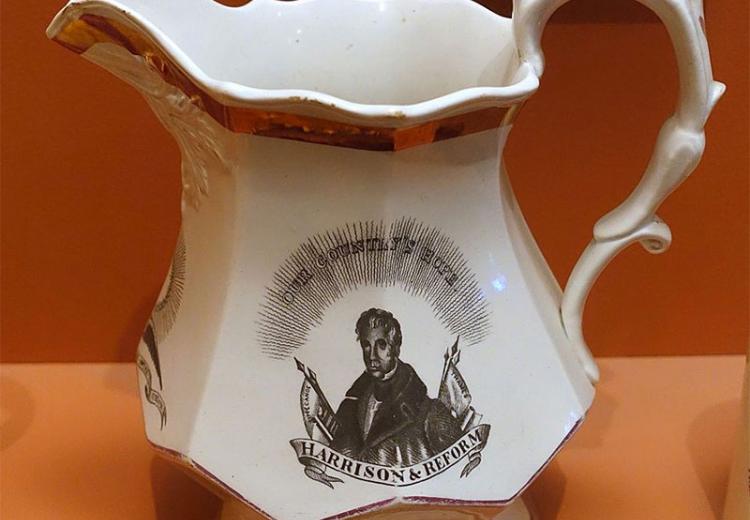Lesson 3: The Campaign of 1840: The Campaign

Pitcher momento - William Henry Harrison, 1840.
After the debacle of the one-party presidential campaign of 1824, a new two-party system began to emerge. Strong public reaction to perceived corruption in the vote in the House of Representatives, as well as the popularity of Andrew Jackson, allowed Martin Van Buren to organize a Democratic Party that resurrected a Jeffersonian philosophy of minimalism in the federal government. This new party opposed the tendencies of National Republicans such as John Quincy Adams and Henry Clay to invest more power in the federal government. Van Buren built a political machine to support Jackson in the 1828 election. Van Buren's skills helped give the Democrats a head start on modern-style campaigning and a clear advantage in organization. The Democrats and Jackson defeated the National Republicans in 1828 and 1832 and maintained their hold on the presidency when they bested the Whigs—a union of former National Republicans, Antimasons, and some states' rights advocates—in 1836. But a major economic depression in 1837 finally gave the Whigs their best chance to occupy the White House. They faced Andrew Jackson's political organizer, vice president, and handpicked successor, President Martin Van Buren, vying for a second term in the midst of hard times.
As they prepared for the election of 1840, both Democrats and Whigs were organized for campaigning on a national scale. In an election that would turn out an astounding 80 percent of a greatly expanded electorate, campaigners sought to appeal to a wide range of voters in a variety of voting blocks. The contest between Martin Van Buren and William Henry Harrison marked the first truly modern presidential campaign, with methods today's students are sure to recognize.
Guiding Questions
How did the Whigs promote William Henry Harrison's image in 1840?
How did the Democrats promote Martin Van Buren's image?
Why is the campaign of 1840 often cited as the first modern campaign?
Learning Objectives
Discuss the use of visual images, objects, and spectacle in the 1840 campaign.
Take a stand: Was the campaign of 1840 based more on substance or image?
